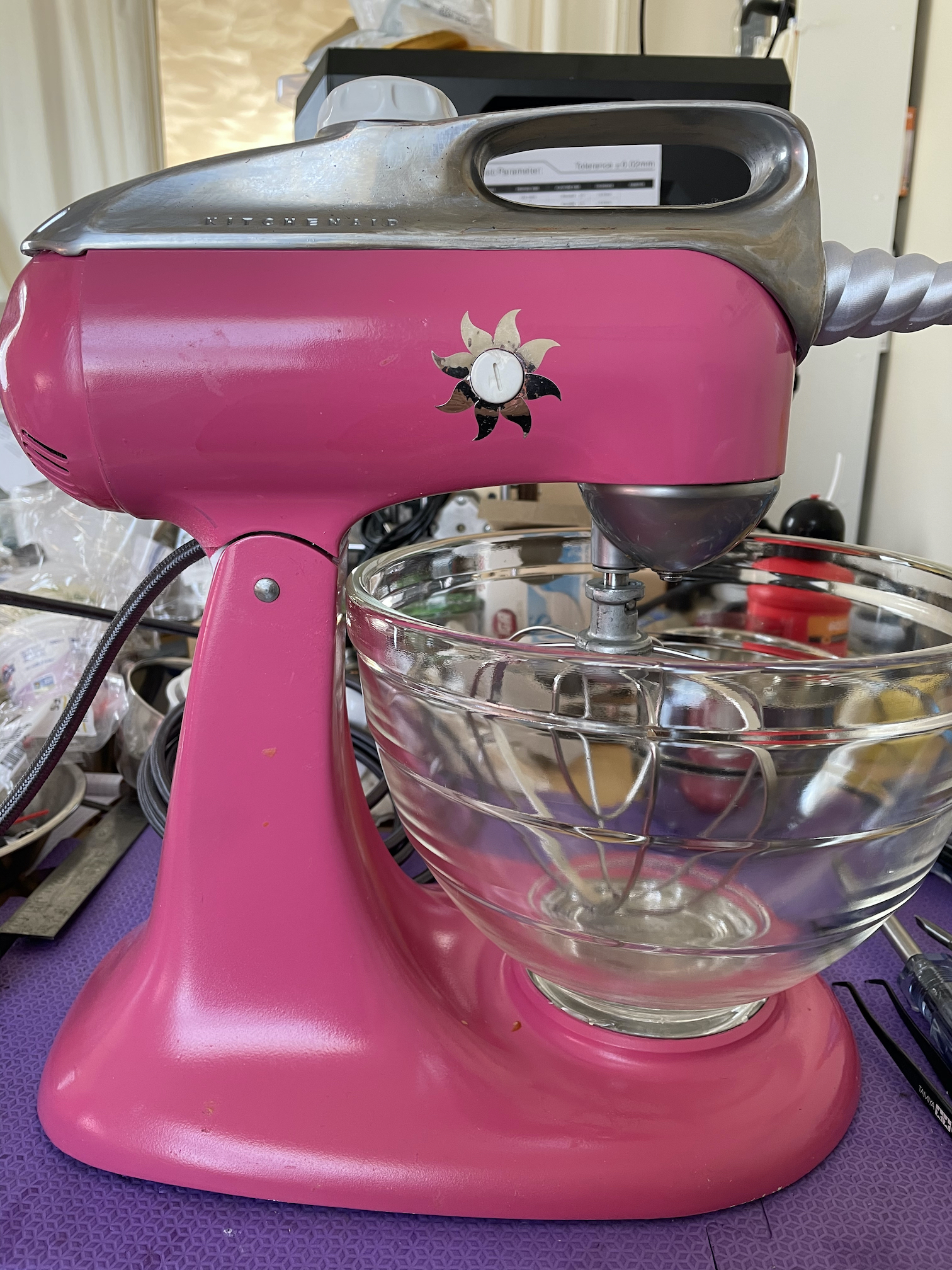“Which Mixer Should I Get?”

I get that question pretty often.
The short answer is… well, there is no short answer.
Mostly, the question that’s really being asked is:
Tilt-Head or Bowl-Lift?
The tilt-head KitchenAid mixers are excellent all-around machines. For most folks buying their first KitchenAid mixer to do general baking and food prep (with attachments), this would be my recommendation. They can also knead bread, but you’ll find that with heavier dough and larger batches, the head torques around the hinge pin. (This doesn’t disqualify them as bread machines; it’s just something to watch for.) The tilt-heads are also better at small batches (such as whipping two or three egg whites) because the standard adjustment gets the beater/whip closer to the bottom of the bowl.
KitchenAid’s tilt-head models differ only in style, color selection, and included accessories — inside they are all identical. So, you can buy a Classic, or an Artisan, new, refurbished, whatever. (The one exception to this is the Artisan Mini, which I’ll get into below.)
The bowl-lift machines excel at larger batches and heavier loads. This is because the head of the mixer is securely bolted to the bowl lift column, and there is very little room for additional motion under load. The gear trains in the “Pro” series (the “new generation” machines, produced starting in the early 2000s) are more durable (but not indestructible), and with the spiral dough hook, they’re excellent at kneading.
Bowl-lift machines have a harder time incorporating ingredients because of increased clearance between the beater and the bowl, and so are not a good choice if you frequently work with small batches.
The older bowl-lift machines, if you’re fortunate enough to find or buy a used one, are also excellent. They’re built on the same internal architecture as the tilt-heads, and use the internal same parts for maintenance and repair.
What About the Gears?
This is not an issue; read more about it here.
Why Can’t We Have Both?
Absolutely. If you’ve got the counter and/or storage space, get one of each, and use each to its strengths. (They can drive the same attachments, too.)
What’s Wrong with the Artisan Mini?
The Artisan Mini is something of an odd mixer out. There’s nothing wrong with it, but there are no serviceable internal parts. If it breaks, you have to replace the entire motor and transmission assembly, since no individual service parts are available. This is expensive and wasteful.
The Artisan Mini also has a significantly smaller bowl, and so it isn’t well suited for enthusiast work. In my opinion you’d be better off making space for a Classic or Artisan, if you can. But if you can’t, by all means get the Artisan Mini.
The Hobart N-50
If you’ve got US$4,000 to spend on a mixer and want the absolute last word in a countertop machine, get this. It’s got three speeds, you need to switch it off before you can change gears, and servicing it is an absolute nightmare (and yes, I’ll do it) but it can handle anything and will last forever. (And it’ll drive the same attachments as the KitchenAid machines.) It’s likely to be more mixer than you’ll ever use, and it’s like owning an exotic sports car, and all that goes with it.